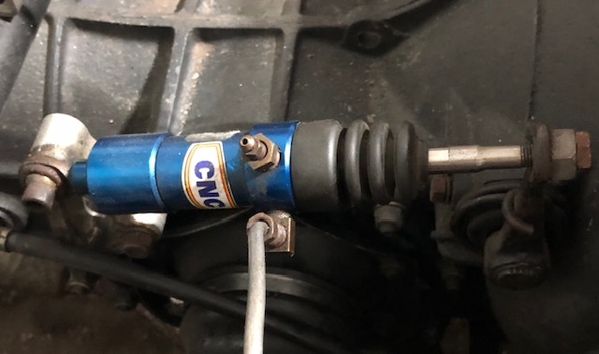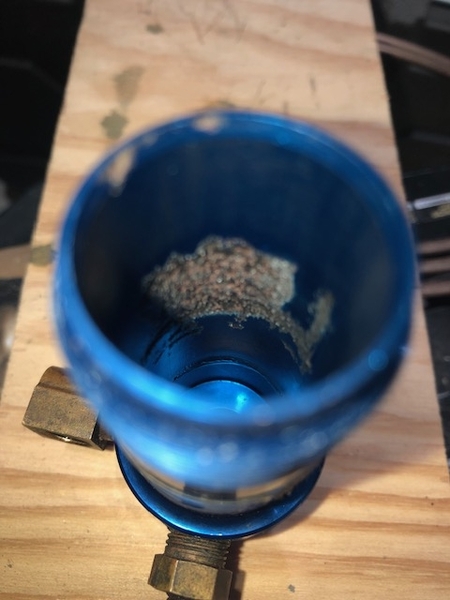I know this topic has come up before, but the thread I saw was pretty old. I started having shifting issue yesterday morning and when I started going through the possible causes, I noticed that my CNC hydraulic slave was leaking. It's only 19 years old, so I guess I shouldn't have been surprised. I don't know what model of CNC slave it is (CNC 300-B ?), but I'm sure it was what Larry Jowdy recommended back in 2004 on the spyder club. The piston measures 7/8" and I assume the travel was slightly over an inch (probably 1-1/8' to 1-3/8").
The CNC rebuild kits aren't available since the company went out of business years ago. I though perhaps I could just get some AFLAS o'rings and fix it if I was lucky. When I took it apart the area where the spring sits was all sludged up with a lot of black gunk. As I cleaned it up more, I noticed the inside bore was eaten up/pitted and no longer smooth. My brake fluid looks clean, so I'm not sure where all the black gunk came from. With the volume of gunk, I don't think it could have been the seals as there was some wear but not as much as I thought there would be.
What do people recommend for a replacement?
When I search for a replacement I find EMPI, Wilwood, Jamar, and a few others like Racing Automotive Group.
Thanks,
Ed G.






